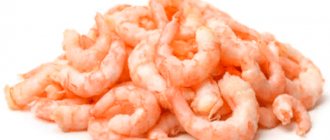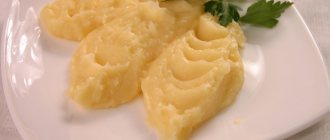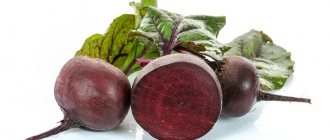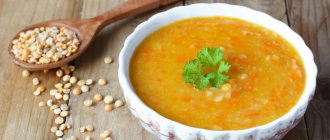Pediatricians have developed a whole set of recommendations on when it is best to introduce this or that product into the children's menu. Not only independent products such as apples, pears, cottage cheese or kefir occupy their place in it, but also flavoring additives such as salt or white refined sugar.
Sugar is widely used in home and restaurant cooking, as well as in industrial food production. However, people interested in a healthy lifestyle try to reduce the consumption of salt and sugar to a minimum, considering them not so harmless.
So, when can a child be given sugar and is it possible at all? Is this product dangerous for a developing organism?
Recipes for children under one year old
It is important not only to choose the right products, but also to prepare them so that the baby gets as much benefit as possible.
Please note! The baby should not be force-fed; the task of parents up to one year is to introduce him to a variety of products and food of different consistency
Vegetable soup
Vegetable puree soup is suitable for little ones. It can be prepared from any products familiar to the baby and to his taste. For example, from zucchini, potatoes, carrots or broccoli, cauliflower.
Step-by-step cooking recipe:
- Wash the selected vegetables thoroughly, peel and finely chop. Usually they are taken in equal proportions, but you can always experiment;
- Place in a saucepan of boiling water and cook until soft;
- Grind with a fork or blender, adding water to achieve the desired consistency.
You can add a little butter at the end. Give the baby the soup when it has cooled down.
Consistency of vegetable soup for first feeding
With Chiken
At what age can you give your child chicken soup depends on whether it is cooked in water or broth. In the first case, it can be administered after 7 months, in the second - 8-9 weeks later.
If you plan to use broth, then after the first cooking it is better to drain it. Then pass the finished chicken meat through a meat grinder and return it back to the soup. You can add a little onion, parsley and carrots. All pieces should be small, the carrots must be boiled until soft.
For a glass of broth you will need 70-80 grams of meat. If desired, you can add a tablespoon of milk or a piece of butter at the end of cooking.
With meat
It is better to cook soup with meat in water. Boil the product separately and grind it in a meat grinder. Add onions and carrots to the soup. If desired, you can add any vegetables, such as zucchini, potatoes or broccoli. Flour is used to give a puree-like consistency. A teaspoon is diluted in water and added to the dish during cooking.
The finished soup can be rubbed through a sieve or used in a blender. It is convenient to regulate the density by adding water. For 100 grams of meat you will need about a glass of water, a third of a small carrot and a little onion. If you plan to include other vegetables in the dish, then take about 20 grams of each.
Fish
Soup for a 10-11 month old child can be prepared with fish. Pollock fillet is suitable for it. Do not use canned food under any circumstances:
- Boil potatoes, carrots and onions;
- Add the fish, be sure to remove the bones and clean it if necessary. She needs to spend no more than 5 minutes in boiling water;
- Grind the soup, add a small amount of boiled milk if desired.
For 100 grams of fish you need a small potato, 5 grams of onion and a third of a carrot.
With potato
Mashed potato soup is suitable for children who are still difficult to cope with pieces. It will be a great way to stimulate chewing skills:
- Wash the potatoes, peel and cut into arbitrary pieces;
- Boil until soft;
- If your baby drinks milk, add in an age-appropriate amount. Remember that up to a year it must be diluted with water. Whole milk, both cow's and goat's, is prohibited for such babies;
- Add carrot juice or cook finely grated vegetables along with potatoes;
- Cool the dish to body temperature.
For 200 grams of potatoes, 100 milliliters of milk and a teaspoon of carrot juice are enough. You will need at least one glass of water.
Other
Broccoli soup is easy to prepare and very healthy. Boil 100 grams of cabbage and one medium-sized potato. The less water in the pan, the more nutrients will be retained in the vegetables. You can bring vegetables to readiness in a slow cooker. When the vegetables become soft, blend them with a blender. If desired, you can add a little low-fat cream, then the already tasty soup will acquire a pleasant creamy consistency.
Broccoli soup
You can cook the rice and then rub it through a sieve. After this, dilute the dish with boiled milk and add a piece of butter. After 8-9 months, baby soups are cooked with vermicelli. You can prepare a dish of potatoes, carrots and onions, adding a handful of pasta at the very end. It’s better to start with products intended for baby food.
The benefits and harms of salt
Mothers want to diversify the baby’s diet, make the food tasty, so that the little man eats willingly and with appetite and grows healthy and strong. However, you should not season baby purees and soups that are introduced during the first feeding. Doctors advise adding salt to children’s food after 1.5 years.
Pediatricians say that early exposure to salt, before 10 months, has a negative effect on the child’s body:
- disrupts the water-salt balance;
- confuses the baby’s taste sensations, getting used to seasoned dishes, children refuse simple food and do not recognize the natural taste of products;
- harms the kidneys, since the small body is not yet able to excrete large amounts of salts;
- retains fluid in the body;
- may cause hypertension in adulthood.
The baby needs sodium. A breastfed newborn receives this microelement through mother's milk. Manufacturers of baby food have taken care of the health of the artificial baby: modern formulas are enriched with vitamins and minerals in the right quantities for proper development. For example, Friso 1 milk formula is as close in composition to breast milk as possible, contains nucleotides, prebiotics, and improves digestion.
Important!
Salting food for babies is harmful and useless: in babies under one year old, the taste buds that distinguish salty foods are not developed.
| Child's age | Daily salt intake |
| Up to 10 months | No more than 0.2 g |
| From 10 months to a year | No more than 0.35 g |
| From one year to 3 years | 2 g |
Table 1. Salt intake according to age
conclusions
There is no need to rush into introducing adult seasonings into the baby’s diet - these can only harm the child. The baby’s kidneys may not be able to cope with the elimination of salt, and the water-salt balance in the body may be disrupted. Another danger is that by adding salt to babies' food, you are setting a time bomb and putting children at risk of developing hypertension in adulthood.
Diabetes from birth
Congenital diabetes mellitus is a pressing problem of modern medicine. The disease in infants is diagnosed completely by accident. More often this occurs with the development of ketoacidosis or diabetic coma.
Scientists have not yet found effective ways to prevent diabetes. If there is someone in the family with this diagnosis, the likelihood of having a baby with type 1 diabetes is very high.
Additional factors are:
- insufficient vitamin D intake by the mother,
- drinking dirty water.
If after the birth of a baby you immediately switch to cow's milk, the likelihood of diabetes will increase even more.
Congenital diabetes develops when the pancreas is underdeveloped or completely absent. These pathologies are considered intrauterine and cannot be treated.
Also, the reason that an endocrine pathology was discovered in a newborn baby may be prematurity. If he was born prematurely, there may be immaturity of the gland tissues and B-cells, which did not have time to form to a normal state.
Affects the formation of the disease and the intake of antitumor and antiviral drugs by the mother during gestation. All medications must be prescribed by a doctor. Incorrect dosage or uncontrolled use negatively affects the formation of pancreatic tissue in the fetus.
Criterias of choice
When you decide to introduce your baby to sour cream, follow certain rules when choosing this product.
The ideal option is homemade sour cream, the quality of which you are sure of. It is not recommended to take it from the market, as it can be too fatty, and there is also a possibility of non-compliance with sanitary standards. When buying sour cream in a store, you should pay attention to its composition, which should contain only natural ingredients, no stabilizers, preservatives or vegetable fats
Good sour cream should contain only sourdough and cream. When choosing sour cream for toddlers, you should give preference only to those that can be stored for no more than seven days. Pay attention to the inscription on the packaging. If “GOST” is indicated, then the product is natural and of high quality, if “TU” - manufacturers can add additives by changing the specified composition. It is important that the sour cream you give to your child does not have lumps, separated liquid, unpleasant odor or mold islands. If any liquid is found in sour cream, this indicates improper storage and the product is lost
If there is graininess or lumps, it means that the technological process was disrupted, for example, dry cream was used. It is unacceptable to buy your child a product called “sour cream”, “sour cream product”, “sour cream”. These names may indicate unnaturalness. It is unacceptable to give a child a product that has expired or from a package whose integrity has been damaged.
Now you know at what age you can introduce a fermented milk product such as sour cream into a child’s diet. Remember the value it has. Do not forget that if you abuse sour cream, negative manifestations may occur that are harmful to the child’s body.
How to replace sugar for a child: is it possible to use a sweetener for children?
The benefits and harms of sugar for children
Unfortunately, sugar is not healthy. It does not provide any benefit to the body other than a quick boost of energy. Many people are mistaken in thinking that sugar helps children develop quickly. The brain needs only pure glucose and fructose. For example, they are found in honey and fruits. And in order to process sugar into glucose and fructose, the body has to use the pancreas. At this point, a lot of calcium is lost. This is why children's teeth quickly deteriorate from sweets.
- The calorie content of granulated sugar is high (398 kcal per 100 g of product). Therefore, overweight people are not recommended to eat sweets.
- Eating sugar helps flush calcium out of the body. People with a sweet tooth also have a lack of B vitamins.
- There is a pattern between sugar abuse and weakened immunity, which is why babies should not have sugar.
- Poor appetite in children may be associated with sweets. When a child eats candy, it is quickly broken down in the body. At this moment, the brain, having received a portion of carbohydrates, thinks that the body is full of nutrition. The appetite fades, but in fact it is not satisfied with the proteins, fats and vitamins it needs.
- Sweet foods also harm the baby's digestion. After a portion of sweets, a newborn may experience bloating. In addition, sugar enhances putrefactive processes in the intestines, after which decay products are absorbed into the blood and can cause skin rashes, which are confused with allergies.
- An allergy to sugar does not occur in an infant, since sugar is a carbohydrate, and an allergy is the body’s reaction to a foreign protein. But sugar can intensify allergic reactions in children to other foods.
- Granulated sugar affects the nervous system of children! Children's behavior worsens from sweets. It’s not for nothing that hyperactive children are prescribed a sugar-free diet. Children who have eaten too much candy become agitated, restless, and have trouble sleeping.
- Sweets spoil your teeth, as beneficial calcium is washed out of the body, as described above. In addition, the remains of sweet food on the teeth contain a lot of bacteria, which triggers the fermentation process.
ul
What to do if you have diabetes?!
Read more >> |
What can you replace sugar with?
What sweet products will be useful for a child instead of granulated sugar:
- Fruits. Infants love sweet bananas, as well as baked apples.
- Dried fruits. You can use them to prepare compotes for babies up to one year old. A little softened raisins or prunes are added to porridge to improve their taste. In dried form, dried fruits can be given to the baby after one year.
- Fructose. It differs from sucrose in that it does not cause a sharp increase in blood sugar. That is why diabetics use it. Many mothers ask what is better: fructose or sugar for the baby? Excessive consumption of fructose can also cause obesity. Therefore, it is better to give children sweet fruits.
- Is it possible to give sweeteners to children? You shouldn't do this. Their effect on the children's body has not been fully studied. There is no need to expose children's health to such a risk.
ul
What sugar is best to give to children?
As you know, there are several types of sugar:
- Beetroot – made from sugar beets. This species is the most common in Russia.
- Cane - it is extracted from sugar cane.
- Maple - it is made from maple sap.
Each type of sugar has its own pros and cons, so it is difficult to recommend a specific one specifically for children. Unrefined cane sugar is less refined. This means that a greater amount of useful substances has been preserved in it. But at the same time, it is higher in calories than beet sugar. There are many other types of sugar, one of which is grape sugar. It is added to baby food. It is considered to be the safest for children's health.
What to do if you have diabetes?!
We recommend reading an exclusive article on how to forget about diabetes forever... Read more >> |
ul
Facts about the dangers of artificial sweeteners
- Many artificial sweeteners are banned in many countries.
- Almost all artificial sweeteners are contraindicated for children, nursing and pregnant mothers, and they are also prohibited from being added to baby food, although in the future, who knows...
- As mentioned above, even a supposedly “safe” dose can cause health problems. And if you are not aware of this, you may not immediately guess what causes them. In addition, indigestion, allergies and heart failure may be difficult to overcome, but it is possible. But what about the fact that artificial sugar substitutes can cause cancer and tumors in experimental rats, so there are huge doubts about their harmlessness.
- These sweeteners are manufactured (produced) chemically, which means they are not a natural and healthy product for our body.
- Many nutrition experts believe that sweeteners generally cannot be absorbed and eliminated by our body according to all the rules, which leads to metabolic disorders (metabolic processes) and some body functions. But proper metabolism is the key to health and beauty!
- Numerous studies confirm the fact that artificial sweeteners can cause kidney disease, heart disease, nervous system, liver disease and other problems.
- We all know very well that the products we buy in stores are “stuffed” with chemicals (preservatives, flavorings, dyes, etc.), but besides this, the environment is not the cleanest. So what's the point of clogging your body even more and reducing your chance of a longer and healthier life?
- And lastly, even if you maintain a safe daily dose, you cannot know 100% about the amount of substitute you consumed: firstly, because food industry manufacturers use sweeteners in the production of various confectionery products, carbonated drinks, sauces, seasonings, etc. And secondly, their number is not indicated. Therefore, it is quite difficult to calculate what the dose of sweetener is in a particular product. And it’s good if a conscientious manufacturer honestly indicates on the packaging what his product contains and in what quantities. But in our country the integrity of the composition is not always respected...
Based on this, it becomes clear that it is better not to use artificial (synthetic) sweeteners if possible...
ul
How artificial sugar substitute contributes to weight gain
The main trap of sweeteners is that if they are used for a long time, they will not help you lose weight, but on the contrary, they will only contribute to weight gain! Surprised? But everything is simple and, at the same time, natural.
The fact is that the taste buds that are located in our mouth, having sensed the sweet taste of sweeteners, send a signal to the brain that sweet food (carbohydrates) is entering the body. As a result of this, the body, to process carbohydrates, secretes all the necessary enzymes, hormones (in particular insulin) and other active substances. But carbohydrates do not enter the stomach. Thereby:
Firstly: many metabolic processes in our body are disrupted, which means your metabolism slows down. After all, a slowdown in metabolism leads to the accumulation of fat reserves and a deterioration in your health...
And secondly: your appetite increases, which also affects the gain of extra pounds, since you really want to eat.
Why, despite the harm, are artificial sweeteners still so popular? There are a huge number of logical assumptions about this question and they are all related to benefits (money), which you will not hear about anywhere, for example:
- They are cheaper to produce than sugar, and, therefore, you need to spend less money on products and get more.
- Your bouquet of diseases is beneficial to the pharmaceutical industry, since you spend money on medicine.
- Aspartame, for example, causes thirst, which benefits drink manufacturers...
ul
Benefits of meat broth
- This product contains proteins, fats, vitamins and many other beneficial compounds found in meat.
- Due to the presence of extractives, this dish will increase your appetite.
- Consuming broth increases the secretion of gastric and pancreatic juice, so food is digested faster.
- Purines and other nitrogenous compounds from the broth are important for the construction of DNA and other structures in cells.
- Beneficial substances from the broth are involved in the development of the nervous system.
- Some children are allergic to meat broth.
- Consumption of purines in large quantities can lead to stimulation of the nervous system.
- As a result of the breakdown of purines that enter the child’s body with the broth, excess uric acid can be formed, which leads to the deposition of its crystals in the kidneys and also in the joints.
- A large amount of uric acid disrupts the permeability of cell membranes, which increases allergic reactions.
- The meat from which the broth is prepared may be treated with hormones, antibiotics and contain other dangerous substances. All of them end up in the broth during cooking.
Strict diet
If you are diagnosed with diabetes, it is important to maintain proper nutrition. Parents will have to monitor the maintenance of water balance and eliminate harmful foods.
The diet should include cabbage, beets, beans, rutabaga, carrots and radishes. Fruits and citrus fruits are not excluded; they contain many vitamins and microelements necessary for a growing body. But their use will have to be limited.
It is difficult to explain to a child of this age why sweets and a lot of buns are not allowed. Inform the kindergarten teacher and grandmothers about the illness, explaining how important it is to maintain proper nutrition and what will happen if everything is allowed.
How to cook?
- The main ingredients from which jelly is prepared are starch and fruit or berry raw materials. There are also recipes based on oatmeal or milk.
- The first jelly is prepared with one component, and as the baby grows, the taste of the drinks can be made more multifaceted and varied.
- Starch must first be mixed with cool water and only then added to the boiling liquid.
- After pouring in the starch, the drink should be constantly stirred until it becomes thick.
- Some of the juice (if berries or fruits are used for the jelly) should not be processed at high temperatures. By adding it to the drink at the end of preparation, you can preserve the maximum of nutrients.
- When cooking, sugar is also added to the jelly, but for the youngest children you can try to do without it, especially if the main ingredient of the drink is sweet fruit. You can replace sugar for baby jelly with fructose or honey (if the child is not allergic), but artificial sweeteners cannot be used for such a drink.
- To cook jelly intended for a child, you should use enamel dishes.
- The baby's jelly should be prepared one time at a time. Storing the drink in the refrigerator, reheating and overcooking is not recommended. This will not only reduce the benefits of jelly, but also increase the risk of developing harmful bacterial flora in it.
How to cook jelly without adding sugar, watch the video of the Marmalade Fox channel.
Benefits and medicinal properties
Thanks to its thick consistency and ability to envelop the walls of the digestive tract, jelly is able to protect the gastric mucosa from damage, thus preventing diseases of the gastrointestinal tract. Eating jelly can eliminate both diarrhea and constipation. In addition, children who have trouble gaining weight are advised to drink jelly, since such a drink contributes to weight gain.
Also, the beneficial effect of the jelly will be determined by the products from which it was prepared:
| Ingredient for jelly | Its properties and effects on the children's body |
| Apples | Apple jelly can be one of the first to be given to a six-month-old child due to its low allergenicity. Recommended for hypovitaminosis. Effectively protects against the development of anemia. Is a diet drink. Helps with diarrhea. |
| Blueberry | Helps with digestive problems (diarrhea, constipation). Has a positive effect on infectious diseases. Improves visual acuity. |
| Cherry | Has antiseptic properties. Recommended for inflammation in the respiratory system. |
| Currant | Helps strengthen capillaries. |
| Cranberry or raspberry | Helps with colds because it contains ascorbic and acetylsalicylic acid. |
| Rowan | Recommended for liver diseases. Has an impact. It has a light action. Has a diuretic effect. |
| Hercules | Rich in minerals and vitamins. Beneficial for stomach diseases. Recommended for diarrhea. It has a tonic and restorative effect on the body. |
Sweets: good or bad
The word “sweets” refers to a huge variety of products that contain large amounts of fructose and sucrose. For example, candies, baked goods, confectionery, ice cream, a variety of marmalades, marshmallows, etc. Foods that contain sugar are essential for the body. Since it is a source of energy, as well as necessary products for normal brain activity.
Most sweets contain not only fructose, but also other substances beneficial to the body. Dried fruits, marshmallows and marmalade contain carbohydrates and microelements that are easily absorbed by the body. When choosing marshmallows and marmalade, it is best to give preference to sweets in natural colors, since bright products contain dyes that are harmful to the body.
Honey is the healthiest sweet. It contains trace elements, vitamins, enzymes and other biological compounds. It has antiseptic and antibacterial effects. Immunity increases, more strength appears
But honey should be introduced into a child’s diet gradually and with extreme caution, since it is a strong allergen.
The right sweets not only benefit the body, but also evoke positive emotions. Children are very happy to welcome beautiful cakes and a variety of sweets.
Sugar for children's menu
One of the most important issues when introducing complementary foods is the choice of sugar. The most common and least useful is refined sugar, obtained from sugar beets and containing sucrose.
After entering the gastrointestinal tract, the product is very quickly broken down into glucose and fructose. Glucose, penetrating the bloodstream, causes increased production of insulin, a pancreatic hormone. Under its influence, the body begins to “use” sweetness as a source of energy, and the unclaimed part of the sugar product turns into fat deposits.
The reasons why the product cannot be added to the menu of children under 1 year old lie in long-term cleansing. As a result, the sweetness loses almost all the beneficial substances contained in the beets.
Grape and brown sugar obtained from sugar cane are considered more useful. It is less refined, due to which the sweetener retains most of the vitamins, micro- and macroelements.
Beneficial features
Salt contains two macroelements: chlorine and sodium. The role of each of these minerals is simply irreplaceable for the body, so consuming salt is beneficial for the human body.
What is the value of sodium:
- Takes an active part in the regulation of water-salt balance.
- Indispensable in the transmission and formation of neuronal impulses.
- Affects the process of muscle fiber contraction.
- Performs a transport function: movement of amino acids and carbohydrate compounds through the cell wall.
- Improves the functioning of the excretory system and the enzymatic activity of the pancreas.
- Stops the process of dehydration of the body.
What is the value of chlorine?
- Necessary for the formation of chloride acid (part of gastric juice).
- Needed for the breakdown of polysaccharides and fats.
- Helps remove toxic substances from the body.
- Plays an important role in maintaining acid-base balance, as well as pressure (osmotic).
Bad influence
If you consume salt in excess, it can lead to the following consequences:
- Increased load on the organs of the excretory system, the formation of swelling.
- Blood pressure increases.
- The process of calcium absorption deteriorates.
- Causes strong feelings of hunger and thirst.
- Restless behavior and irritability appear.
Sweeteners for children
Various substitutes for regular sugar, which include fructose, are very popular. This sweetener is intended for people with diabetes. It can be bought in pharmacies or in hypermarkets, in special departments for diabetics.
Fructose is a sweetener that is suitable for children. It is made from fruit and berry pulp, does not affect blood sugar levels, and its breakdown in the body occurs without the “participation” of insulin. The taste of fructose is much sweeter than refined sugar, so a minimal amount is required when preparing it. But we should not forget about moderation, because a passion for fructose can cause metabolic disorders and lead to obesity.
These days, a variety of sweeteners are extremely popular - acesulfame, aspartame, sucralose. Such products are only allowed to be used for feeding children with diabetes. They give dishes a pleasant, sweet taste and do not have any effect on the level of the product in the blood.
It is best to exclude this product from a healthy baby’s menu. It contains several chemicals and compounds, the effect of which on the body has not been fully studied to date. Therefore, it is better to add a little natural refined sugar or cane sugar to the dish.
Read on the topic Marmalade for children: at what age can it be given
Read on the topic: Can chicory be given to children: at what age can it be given to a child - benefits and harms
Sugar is a product that is included not only in confectionery products, but also in many other dishes. When consumed in moderation, it saturates the child’s body with energy, increases activity and tone, and gives a great mood. An excess of sweets in the diet can cause serious health problems, so the most important rule for adding sugar to a child’s menu is moderation.
Read on the topic Children's hematogen: at what age can it be given to a child, benefits and composition
Share link:
Did you like the article?
Average rating 0 / 5. Total votes: 0
- about the author
- Recent publications
Elena Volodina
Author of the article
Elena Volodina recently published (view all)
- Children's hematogen: at what age can it be given to a child, benefits and composition - 12/24/2020
- At what age can you give persimmon to a child: benefits, why not - 11/22/2020
- At what age can you give grapes to a child: with and without seeds - 11/13/2020
At what age should it be given?
Nowadays, doctors, including Dr. Komarovsky, do not recommend giving breastfed babies any foods before six months of age. If the baby is already six months old, the child’s menu becomes more varied. Meat appears in it from 8 months of age.
Some mothers and doctors do not recommend introducing pork, even lean pork, into children's diets until the age of 1 year or even 2-3 years. However, babies can be introduced to lean pork meat as early as 8-10 months of age. However, it is recommended to do this after the baby has tried and gotten used to such less allergenic options for complementary meat feeding as rabbit, turkey and veal.
The most preferable option for pork for a small child is ready-made canned food intended for baby food. Their advantages are proven quality and good grinding. If the mother is confident in the quality of fresh pork, she can boil it for the child for 20-25 minutes and prepare meat puree.
The first portion of such a dish should not exceed a teaspoon. After treating your baby to pork in the first half of the day, you need to carefully monitor the baby’s condition. If any ailments or signs of allergy appear, the introduction of pork into the diet should be stopped. If the baby tolerates pork puree well, its portion is gradually increased to the age-appropriate norm of a meat dish per day.
Calculate your complementary feeding table
Why children should not eat sugar
Is it possible to give a child sugar and from how many months is this allowed? This question interests many parents when introducing sweet complementary foods.
Doctors, including Dr. Komarovsky, talk about the dangers of sugar for children:
- Eating sweets causes disruption of healthy intestinal microflora and the development of dysbiosis. The fermentation process causes bloating, nausea and stool upset.
- An excess of sweet foods in baby food often causes hyperexcitability of the nervous system - the child becomes too nervous, restless, and may experience sudden mood swings and aggressiveness.
- Eating sweet foods can cause metabolic disorders and impair the absorption of vitamins and minerals from food.
- The product has a negative effect on the condition of teeth and often causes the development of caries. Sugary drinks lead to the fact that the baby begins to lose baby teeth and develops an abnormal bite.
- After eating too much sweets, a child's immunity level decreases, making him vulnerable to many viruses and infections.
- Excessively high blood sugar levels exacerbate food allergies.
- Excessive amounts of sweets in a child's diet increases the risk of developing diabetes.
- The product should be introduced into the baby’s diet very carefully and in minimal quantities, as it causes a change in taste habits. Children refuse regular food in favor of foods that are sweetened.
Passion about sweets. Sugar in a child’s life – Dr. Komarovsky’s School
Sugar should not be consumed in large quantities by children who are prone to obesity. The high calorie content of a sweet product leads to a rapid increase in body weight.
Best Recipes
Oat
Pour a third of a glass of rolled oats with a glass of warm water and leave for 10 hours (the best option would be to leave the flakes overnight). Drain the resulting liquid into a separate container, add a glass of milk, a pinch of salt and sugar to taste. Place the container on the fire and cook until the jelly becomes thick.
Lactic
Stir two tablespoons of cornstarch into a little cool water. While it is swelling, bring two glasses of milk to a boil and add 60 g of sugar or fructose to it. Next, pour the diluted starch into the boiling milk with sugar (while stirring the drink constantly). Cook the jelly until thickened. You can add vanillin, lemon zest, jam, fruit and berry syrup to this milk drink.
Apple
Wash two apples, peel them and grate them on a fine grater, then use a sieve to squeeze out the grated mass to obtain juice. Setting the juice aside, pour two glasses of water over the apple mixture and boil for about 10 minutes. After straining, pour the resulting broth into another saucepan and boil. Separately, dilute a teaspoon of starch in cold water. Pour the starch solution into the boiling apple broth, wait until it thickens, remove from the heat, pour in the apple juice and, after cooling, give it to the baby.
Pumpkin
Combine a glass of fresh juice with two glasses of water, mix well and boil. Separately, stir a teaspoon of potato starch in a small amount of water, then add it to the pumpkin juice. Add fructose to the drink to taste and simmer over low heat for about five minutes. If desired, you can add cinnamon to the finished jelly. Give your child a drink when it has cooled down a little.
From frozen or fresh berries
For berry jelly, take 100 grams of strawberries, cranberries, blueberries, currants or other berries and 300 ml of water. Sort and wash the fresh berries well, then grind them using a meat grinder, juicer or blender. Pour the juice obtained from grinding into a jar and place in the refrigerator.
Pour boiled water over the berry pulp and place on fire. Boil it for 7 to 10 minutes, then strain and divide the liquid into 2 parts. After cooling, add a teaspoon of starch to one of them and leave it to swell. Add sugar to the second part (a teaspoon is also enough) and bring to a boil.
When the berry broth boils, reduce the heat and add the swollen starch while stirring constantly. Bring to a boil again, turn off the stove and pour the juice that was in the refrigerator into the drink. After stirring, pour the jelly into glasses. Using the same recipe, you can make a drink from frozen berries.
From dried fruits
Prepare a decoction of dried fruits, taking 30 g of raw materials and 300 ml of purified water. Strain the drink by slightly squeezing the cooked fruit. Pour a small amount of liquid into a glass, where add a tablespoon of starch. Let the remaining broth boil, add diluted starch and cook until thickened. If desired, you can add a little fructose or sugar syrup to the drink during cooking.
Chemical composition and types of salt
Table salt, the main component of which is sodium chloride, is considered an essential food product that is important for the normal development and functioning of the body, including children's.
Sodium chloride is a source of two microelements useful for life: sodium and chlorine, each of which, when ingested, is capable of performing certain functions.
So, chlorine:
- Takes part in the secretion of hydrochloric acid, which is part of the gastric juice.
- Helps remove toxins from the body, thereby relieving the load on the liver.
- Plays an important role in the breakdown of fats and complex carbohydrates.
- Maintains normal acid-base balance and osmotic pressure.
It is salt that covers 90% of the body's needs for such an element as chlorine.
Sodium:
- It is an important part of the body’s water-salt metabolism and prevents dehydration.
- Ensures the normal functioning of nerve endings and muscle activity, including the functioning of the heart muscle.
- Stimulates the absorption of certain micronutrients in the small intestine and kidneys.
- Promotes the movement of amino acids and glucose through the cell membrane.
In addition to sodium and chlorine, salt may also contain other trace elements.
So, on the shelves of our stores, as a rule, you can find the following types of table salt:
- Stone (cooking room, dining room). In addition to sodium and chlorine, it contains about 2% of other minerals, due to which this type of salt has a grayish tint to the crystals. Rock salt is most often used for cooking and canning, and is recommended for use in baby food. It is mined in salt mines or quarries. Rock salt comes in different grind sizes.
- Refined. This type of salt is 100% sodium chloride. To obtain refined salt in the processing of natural material, high temperatures, bleaches and substances that increase flowability are used. All this almost completely neutralizes the natural structure of salt. Refined salt cannot be present on the children's menu.
- Iodized, for which iodine-containing components (usually potassium iodate) are added to ordinary salt. Since iodine evaporates quickly, this type of salt is recommended to be used only in cold or warm dishes. Iodized salt can be added to children's dishes only after consultation with a pediatrician.
- Marine. In addition to chlorine and sodium, this salt contains trace elements such as calcium, magnesium, iron, potassium and iodine. This type of salt is produced by evaporating sea water. Depending on the source of production (the sea), the taste, smell and composition of sea salt change. It can only be included in children's menus from the age of five.
- Pink Himalayan. It contains approximately 14% of useful trace elements. This type of salt is credited with natural purity and medicinal properties. Pink Himalayan salt is mined in Pakistan. Its origin is quite unique: during the movement of earth layers, seas were conserved deep in the depths, and salt deposits were formed through volcanic activity over hundreds of millions of years. Suppliers of pink Himalayan salt claim that this product is absolutely safe for children, but experts have so far refrained from making any official statements on this matter.
- Black Himalayan, which has a rich mineral composition. Salt has a brown color due to the high concentration of iron and sulfur in its composition. It is mined manually in Pakistan and India. It is characterized by a specific aroma and unique taste. It is actively used in cosmetology, treatment and cooking, but is not suitable for baby food.
When to give salt
If you decide that you cannot do without sodium chloride in your little one’s life, then it is very important to know how and when to introduce it into complementary foods. After all, earlier introduction or appearance of a larger amount of this substance in the children’s diet, you risk getting unexpected results and can easily cause irreparable harm to the baby’s health
At what age can children salt their food? - You ask. Indeed, this is a very important question. The most optimal age is considered to be a one-year-old baby. However, there are cases when doctors allow salt to be added to the baby’s menu from 9 months. Before introducing complementary foods, the baby receives enough sodium chloride through breast milk or formula. When you add new foods to his diet, they also contain important elements (including chlorine and sodium). Therefore, it makes no sense to accustom a baby to the unnatural taste of food; besides, before he is one year old, his digestive and excretory systems are not yet sufficiently formed. And earlier introduction of salt or salty foods is fraught with negative consequences for the baby’s body.
Norms
If you still decide to introduce salt early and start adding it to your baby’s dishes, starting at 9 or 10 months, then the baby’s daily intake will be 0.2 grams.
If you took the correct intake of sodium chloride after 10 to 12 months, then this norm will be 0.35 grams.
For the diet of children over one year old, the acceptable norm is 0.5 grams per day, for one and a half years - 1 gram, after three years - 4 grams.
If you are worried that you will not be able to accurately calculate these same grams, then you can use the preparation of a saline solution and add it directly to food.
To do this you need:
- Dissolve salt in water (you will need 25 grams per 100 ml).
- Boil.
- Now you need to strain this solution through gauze or bandage (3 times, no less).
- Add water (100 ml) to the purified liquid.
- Bring to a boil again and let cool.
If you need to add 0.3 grams of salt to your food, you will need half a teaspoon of the solution - this is the norm for a 200 gram dish.
Let's sum it up
There is salt in every home. This essential product is not just a food additive, but a source of sodium and chlorine. At what age can a baby try salty foods? Children under one year old receive their first doses of salt from breast milk. Therefore, up to 10 months there is no need to salt baby food. And after 10 months, you can add a little salt to your baby’s food. An allergy to salt in an infant is a very rare but dangerous phenomenon. If a child develops a rash, asthma attacks or other allergic symptoms, it is necessary to stop adding salt to food and consult a doctor.
Television programs and print publications devoted to healthy eating constantly raise the issue of the dangers of salt. The terrifying name “white death” and a number of terrible diseases for which it is blamed cause reasonable concern among parents and burning questions: “Is it necessary to add salt to a child’s food at all? At what age and how much? Is there an alternative to dangerous salt?
Experts are unanimous in their opinion that with proper breastfeeding or artificial feeding and timely introduction of complementary foods, the child’s body does not experience sodium deficiency until the age of 1.5 years. But there are conditions and diseases that lead to rapid loss of the sodium mineral:
- increased sweating due to being in a hot climate;
- vomit;
- diarrhea;
- taking diuretics;
- cystic fibrosis;
- dysfunction of the adrenal glands.
Externally, signs of salt deficiency appear in the form of lethargy, decreased blood pressure, muscle pain and cramps.
The benefits of sugar in baby food
When answering whether a child can be given sugar and at what age this can be done, one must take into account that a sweet treat can be beneficial for children. It is an excellent source of fast carbohydrates, which allow the human body to receive energy that ensures full physical and intellectual development.
The sweet taste of the product has a positive effect on mood, activity, performance and functioning of the nervous system. The benefit of the delicacy lies in the fact that granulated sugar contains substances that can become natural preservatives. They destroy many harmful bacteria, providing a mild bactericidal effect.
Sugar in baby food – Doctor Komarovsky











